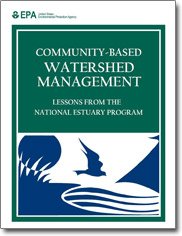Successful Watershed Management and Lessons Learned from EPA's National Estuary Program
The National Estuary Program (NEP) represents a unique partnership of the U.S. Environmental Protection Agency (EPA) and numerous federal, state and local organizations working together to address coastal watershed management challenges.
To share the wealth of knowledge and experiences of the 28 NEPs, EPA developed the Community-Based Watershed Management Handbook. The Handbook describes the highly successful approaches implemented by the NEPs, and while NEPs focus on estuaries and coastal watersheds, their experiences can be adapted to non-coastal watershed initiatives.
Highlighted below are four keys to successful watershed management drawn from the NEP experiences. These elements, and other lessons learned, are further described in the Handbook.

